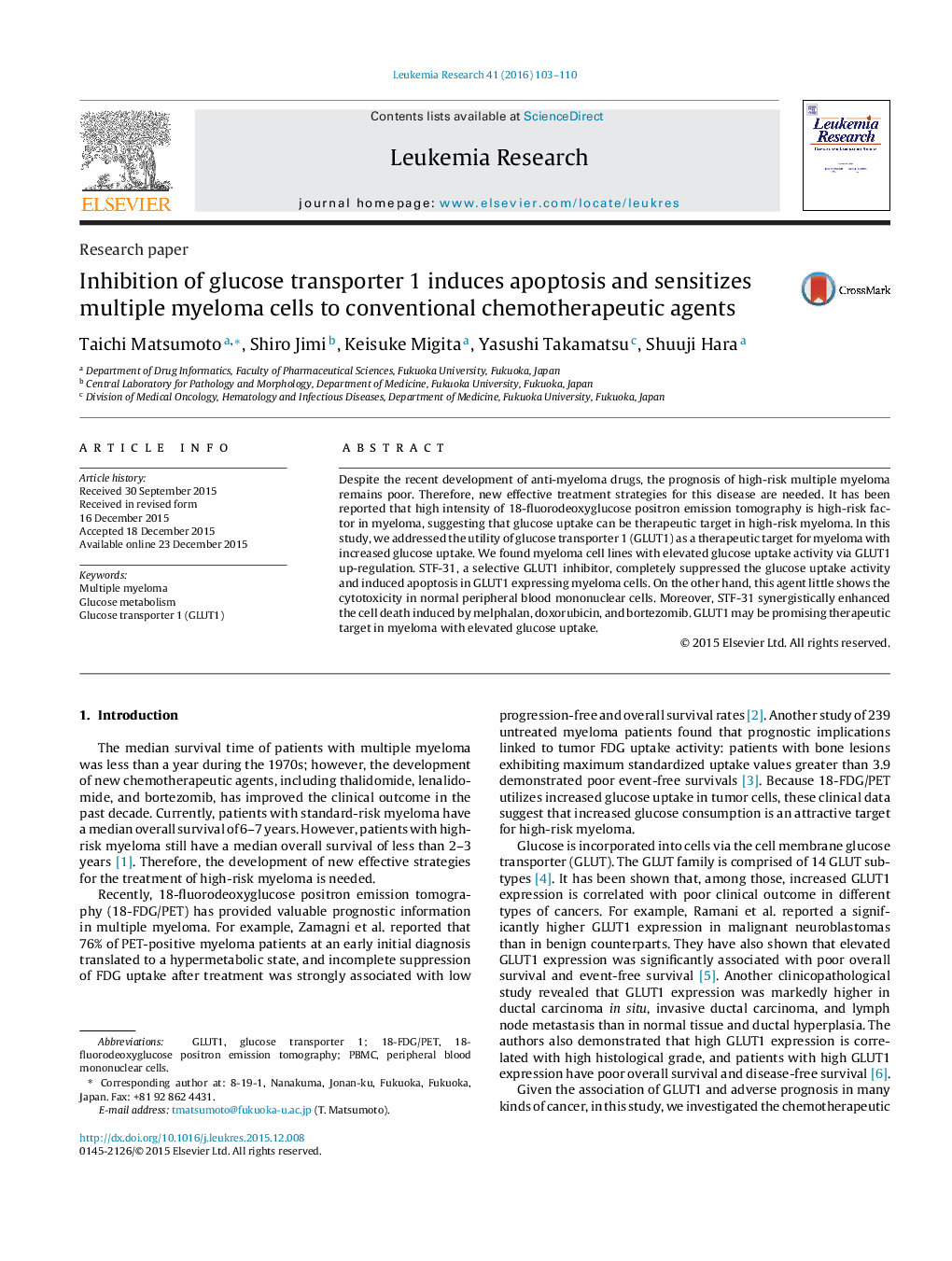| Article ID | Journal | Published Year | Pages | File Type |
|---|---|---|---|---|
| 2136488 | Leukemia Research | 2016 | 8 Pages |
•Some of myeloma cells increased glucose consumption by up-regulation of GLUT1 expression.•STF-31, a specific GLUT1 inhibitor, selectively induces apoptosis in GLUT1-abundant myeloma cells.•STF-31 synergistically accelerated the cytotoxicity of conventional anti-myeloma agents.
Despite the recent development of anti-myeloma drugs, the prognosis of high-risk multiple myeloma remains poor. Therefore, new effective treatment strategies for this disease are needed. It has been reported that high intensity of 18-fluorodeoxyglucose positron emission tomography is high-risk factor in myeloma, suggesting that glucose uptake can be therapeutic target in high-risk myeloma. In this study, we addressed the utility of glucose transporter 1 (GLUT1) as a therapeutic target for myeloma with increased glucose uptake. We found myeloma cell lines with elevated glucose uptake activity via GLUT1 up-regulation. STF-31, a selective GLUT1 inhibitor, completely suppressed the glucose uptake activity and induced apoptosis in GLUT1 expressing myeloma cells. On the other hand, this agent little shows the cytotoxicity in normal peripheral blood mononuclear cells. Moreover, STF-31 synergistically enhanced the cell death induced by melphalan, doxorubicin, and bortezomib. GLUT1 may be promising therapeutic target in myeloma with elevated glucose uptake.
